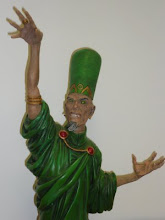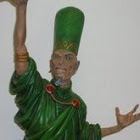
A superb space opera with a solid plot, great action, a superb context and a very engaging cast. Roka Nostaco and his crew are smugglers-for-hire, runners, en route to make a collection when they find that the space ship they are due to meet is under attack. They beat off the attack and rescue the ship and most of the cargo. Complications follow when that take a woman they found on the cargo ship on board and find that they have a bounty on their heads. A visit to a huge space station for repairs and rest proves to be very difficult. The action is sharp and fast, carefully balanced with information, back story and dry humour. The conclusion is satisfying and open ended enough to provide a platform for new stories.
Sean Wang has taken a very familiar template of footloose adventurers getting caught up in action that pulls at their wallets as well as their residual sense of right and wrong and gives it fresh and focused momentum. He is faithful to the genre requirements for a diverse, bickering crew, very competent in action if preferring to avoid it with a nice slice of back story to give them hard knock experience. The quality of his writing means that the requirements do not slide into cliche, the cast are lively, individual and very engaging. The situations they find themselves in are superbly set up, logically sequenced and give the cast a opportunity to shine individually and collectively.
The art is equal to the writing, it strongly expresses the story and provides a glorious space opera context. The cast are expressive and individual, the space ship hardware is given enough detail and functional thought to ground the action very firmly. The big scenes of space conflict are loud and impressive, close quarter combat is fast and intense. This is a very thoughtfully constructed comic that wearing its considerable craft lightly, it is so good it makes it look easy. A pleasure to read, re-read and savour, wonderful.




